Kia Optima: Engine Control System / Engine Coolant Temperature Sensor (ECTS)
Specifications
Temperature
|
Resistance (kΩ)
|
°C
|
°F
|
45
|
113
|
244.8 - 281.4
|
55
|
131
|
162.5 - 186.5
|
60
|
140
|
133.5 - 153.5
|
71
|
159.8
|
88.93 - 102.13
|
85
|
185
|
55.16 - 63.36
|
110
|
230
|
26.02 - 29.82
|
125
|
257
|
17.5 - 19.7
|
Description and operation
| • |
Engine Coolant Temperature Sensor (ECTS) is located in the engine coolant
passage of the cylinder head for detecting the engine coolant temperature.
|
| • |
The ECTS uses a thermistor whose resistance changes with the temperature.
|
| • |
The electrical resistance of the ECTS decreases as the temperature increases,
and increases as the temperature decreases.
|
| • |
The reference +5V is supplied to the ECTS via a resistor in the ECM.
That is, the resistor in the ECM and the thermistor in the ECTS are connected
in series.
|
| • |
When the resistance value of the thermistor in the ECTS changes according
to the engine coolant temperature, the output voltage also changes.
|
| • |
During cold engine operation, the ECM increases the fuel injection duration
and controls the ignition timing using the information of engine coolant
temperature to avoid engine stalling and improve drivability.
|
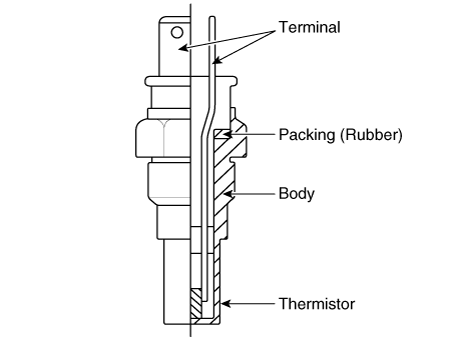
Components and components location
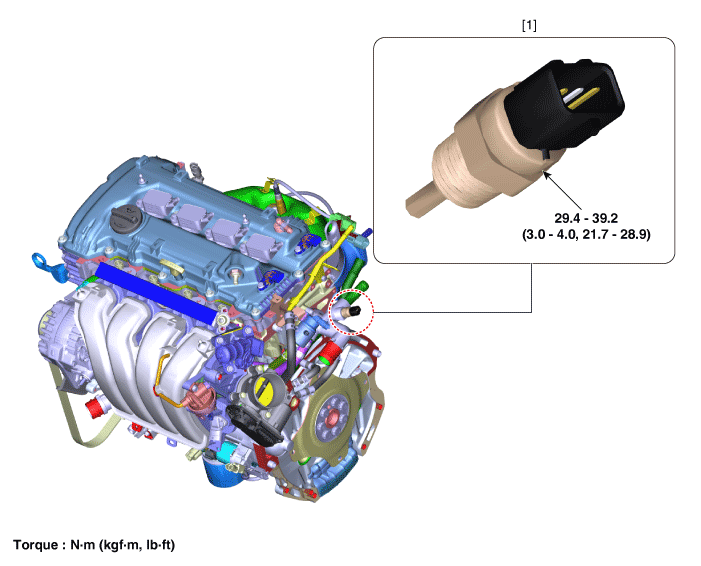
1. Engine Coolant Temperature
Sensor (ECTS)
|
|
Schematic diagrams

Harness Connector
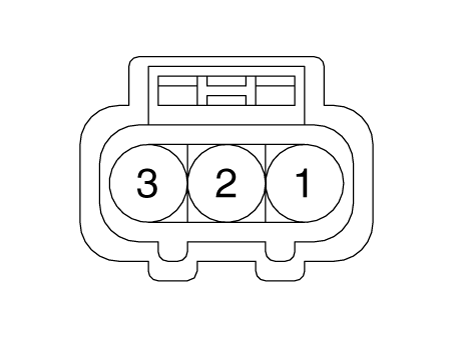
Repair procedures
| 1. |
The engine control system can be more quickly diagnosed for troubles
by using the vehicle diagnostic system (KDS). (Refer to "DTC guide")
KDS provides the following information.
| (1) |
Self diagnosis : Inspects and displays diagnostic trouble code
(DTC)
|
| (2) |
Sensor data : Checks the system input/output value status
|
| (3) |
Forced operation : Checks the system operating status
|
| (4) |
Additional function : Controls system options, zero point adjustment
and other functions
|
|
| 1. |
Turn ignition switch OFF.
|
| 2. |
Disconnect the engine coolant temperature sensor connector.
|
| 4. |
After immersing the thermistor of the sensor into engine coolant, measure
resistance between ECTS signal terminal and ground terminal.
|
| 5. |
Check that the resistance is within the specification.
Temperature
|
Resistance (kΩ)
|
°C
|
°F
|
45
|
113
|
244.8 - 281.4
|
55
|
131
|
162.5 - 186.5
|
60
|
140
|
133.5 - 153.5
|
71
|
159.8
|
88.93 - 102.13
|
85
|
185
|
55.16 - 63.36
|
110
|
230
|
26.02 - 29.82
|
125
|
257
|
17.5 - 19.7
|
|
| 1. |
Disconnect the negative battery terminal.
|
| 2. |
Remove the battery.
(Refer to Engine Electrical System - "Battery")
|
| 3. |
Disconnect the engine coolant temperature sensor connector (A).
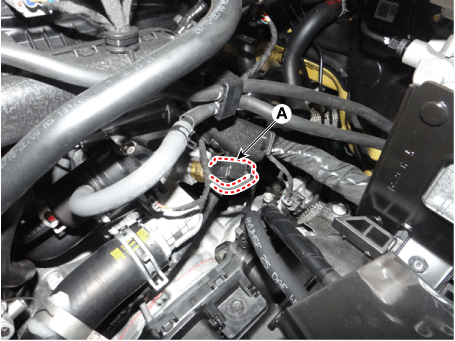
|
| 4. |
Remove the ECTS (A).
|
Tightening torque :
29.4 - 39.2 N·m (3.0 - 4.0 kgf·m, 21.7 - 28.9 lb·ft)
|
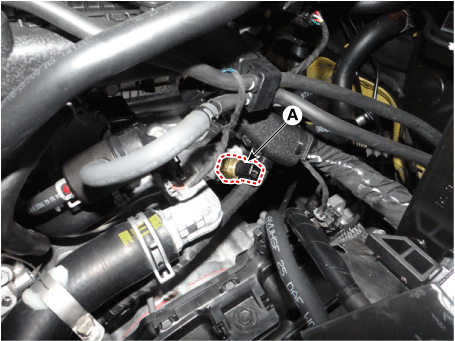
|
Note that engine coolant may be flow out from the engine coolant
temperature control assembly when removing the sensor.
|
|
| • |
Install the component with the specified torque.
|
| • |
Note that internal damage may occur when the component is dropped.
If the component has been dropped, inspect before installing.
|
| • |
Apply the engine coolant to the O-ring.
|
|
| 1. |
Install in the reverse order of removal.
|
| 2. |
Refill the engine cooling system with engine coolant.
(Refer to Engine Mechanical System - "Coolant")
|
Specifications
Specification
Manifold Absolute Pressure Sensor (MAPS)
Pressure
Output Voltage (V)
kPa
kgf/cm²
...
Description and operation
Description
•
Crankshaft Position Sensor (CKPS) detects the crankshaft position and
is one of the most important sensors of the engine cont ...
Other information:
Speedometer
The speedometer indicates the speed of the vehicle and is calibrated in kilometers
per hour (km/h) and/or miles per hour (mph).
Tachometer
The tachometer indicates the approximate number of engine revolutions per minute
(rpm).
Use the tachometer to select the correct shift po ...
Description and operation
Description
Curtain airbags are installed inside the headliner (LH and RH) and protect the
driver and passenger from danger when a side crash occurs. The SRSCM determines
deployment of the curtain airbag by using the side impact sensor (SIS) signal.
...




 Manifold Absolute Pressure Sensor (MAPS) & Intake Air Temperature Sensor (IATS)
Manifold Absolute Pressure Sensor (MAPS) & Intake Air Temperature Sensor (IATS) Crankshaft Position Sensor (CKPS)
Crankshaft Position Sensor (CKPS)


